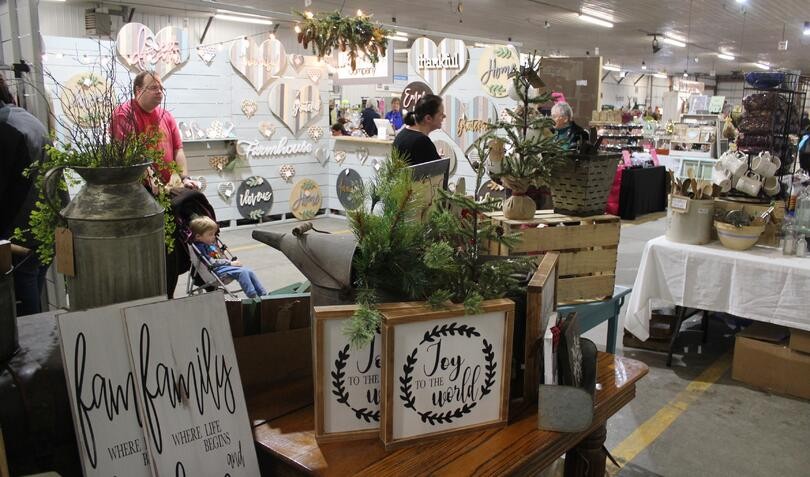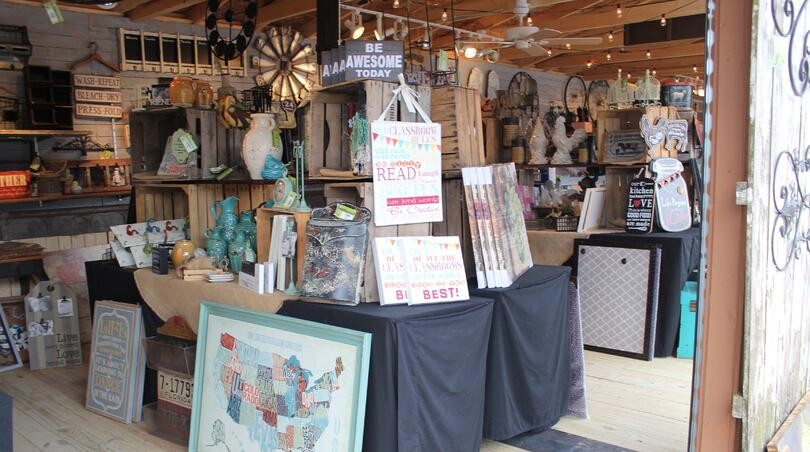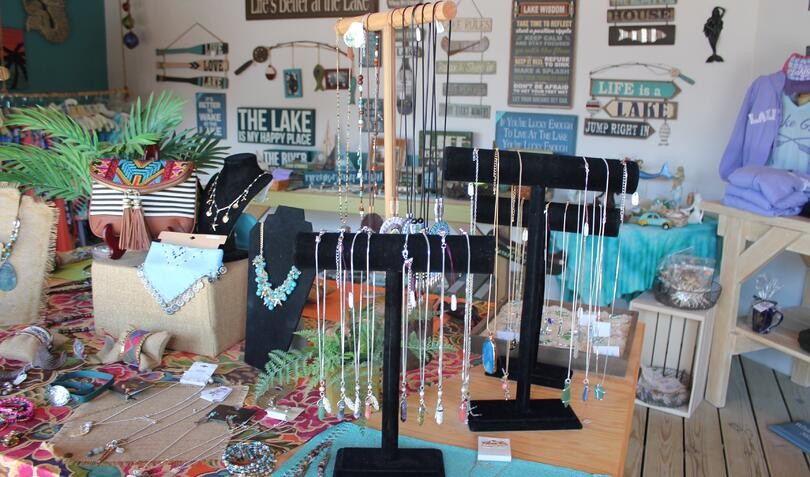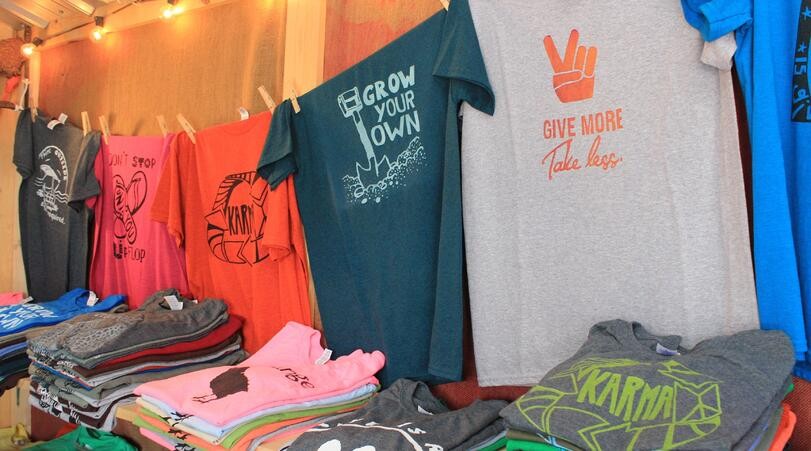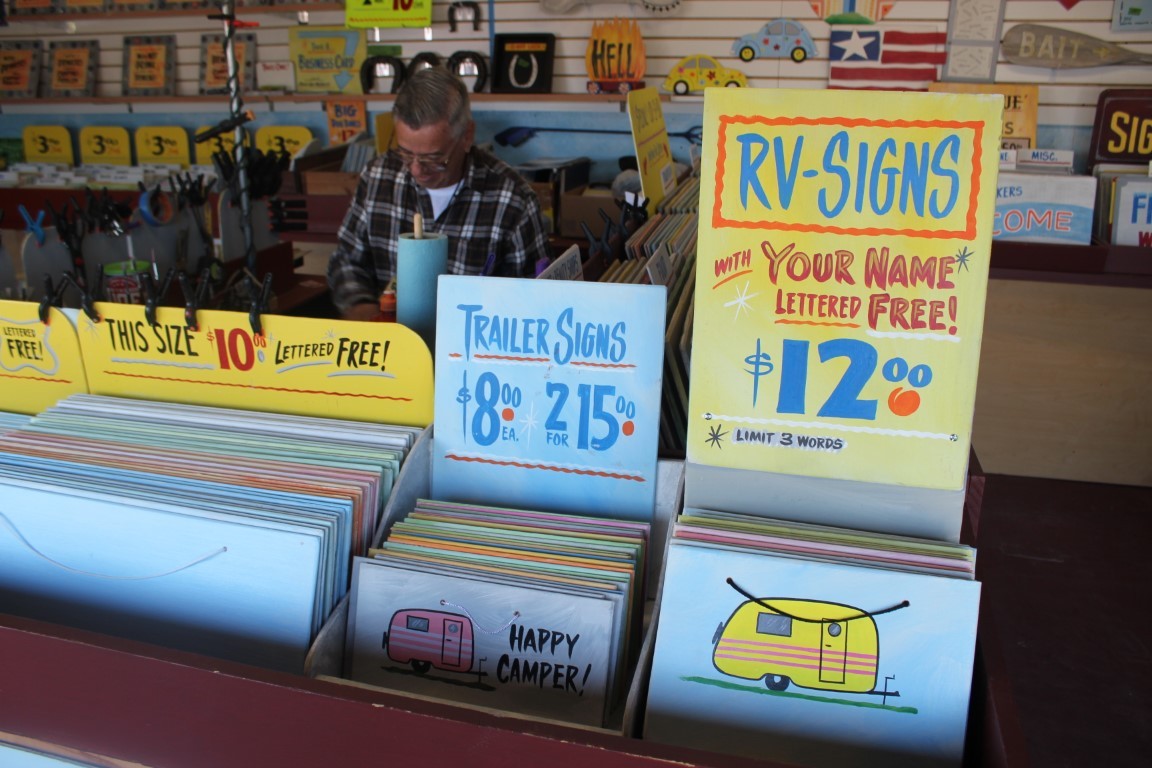When planning your booth set up, take into consideration the following eight booth display factors to help your experience selling at flea markets be a success.
The way you set up your flea market booth can make or break your flea market business. After all, if your booth has no eye appeal, how are you going to get people to stop in, let alone make a sale?
1. Determine Traffic Flow
It’s easy to judge the quality of your display by just standing in the front or middle and viewing it from there. However, that isn’t how most shoppers will approach your set up! Determine the angles in which shoppers will be walking by or into your booth and build your display strategy around that!
2. Use your Best Pieces
Make sure your best and most attractive pieces are out front where most people will see them first. There are always so many nice things to see at a market or craft fair, so make sure you can grab the shoppers’ attention before they get burnt out by looking at the other booths!
3. Keep out the Clutter
It might seem like a no-brainer, but neatness is super important when attracting people into your booth! Make sure that extra stock and boxes or totes are hidden away under tables (preferably with table cloths that go down to the floor).
No one likes going through a booth with a bunch of stuff in the way. When your space looks well put together and uniform, customers can tell you put time, effort and energy into what you do. Having a clean, organized and aesthetically pleasing space is appealing to customers.
Learn how to Become a Vendor at Shipshewana Flea Market.
4. Use Varying Heights
Flat is boring. Spice up your display with various heights, levels and dimensions. Use tables AND floor displays. Create height on your tables with different sized crates, shelving units or hanging fixtures. Free-standing crates or wall crates used in the back of your booth creates dimension and height—as well as maximizes space that would otherwise not be used.
5. Consider your Product
There is no “one-size-fits-all” when it comes to product displays. For example, if you sell signs, you’ll need to hang them. Jewelry might need to be behind glass and be well-lit. Other items might need to be folded on racks. Or maybe spread out on a table. In any case, make sure the customer can physically see the item quickly without being overwhelmed.
6. Keep it Well-Stocked
It might seem backward, but make sure your shelves and display is full of product at all times. Believe it or not, shoppers are not impressed with you when you have a half-empty table. They want to know that they are getting the most selection, so be sure to restock immediately and always bring way more than you plan to sell.
7. Use Signage
Make sure prices are clear to customers. No one wants to have to ask and bother a vendor about pricing. However, do not overload your shoppers with too much information or text heavy signs. Get your point across about what’s in it for the customer, and then stop.
8. Use Props & Lighting
Props are a great way to get customers to connect with your merchandise. Don’t leave anything to the imagination, people need to be shown how to use your products! Let them see how great it would look on them or in their home.
Sell plant holders? Put a plant in it! Make coffee mug cozies? Put a mug in it! Show customers how great your product is! Also, be sure to use lots of lighting whether that is string lights, lamps or spot lights. It creates a friendly glow that will set your booth apart.

